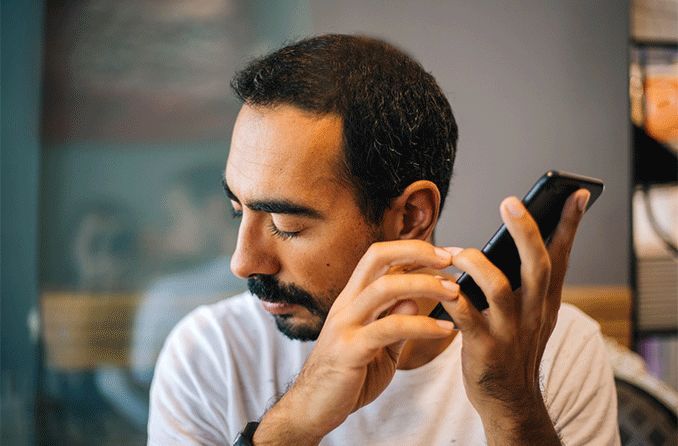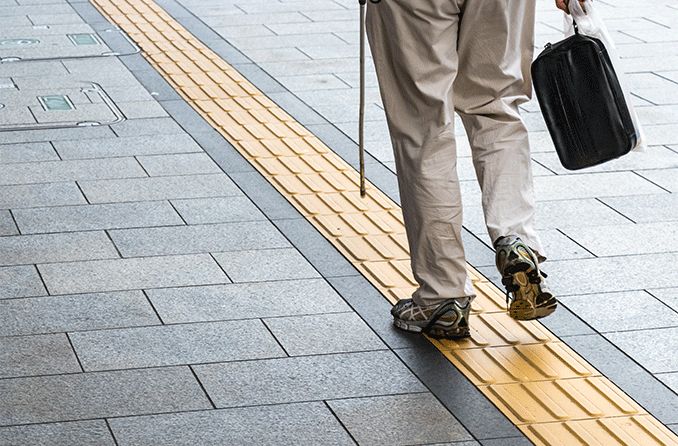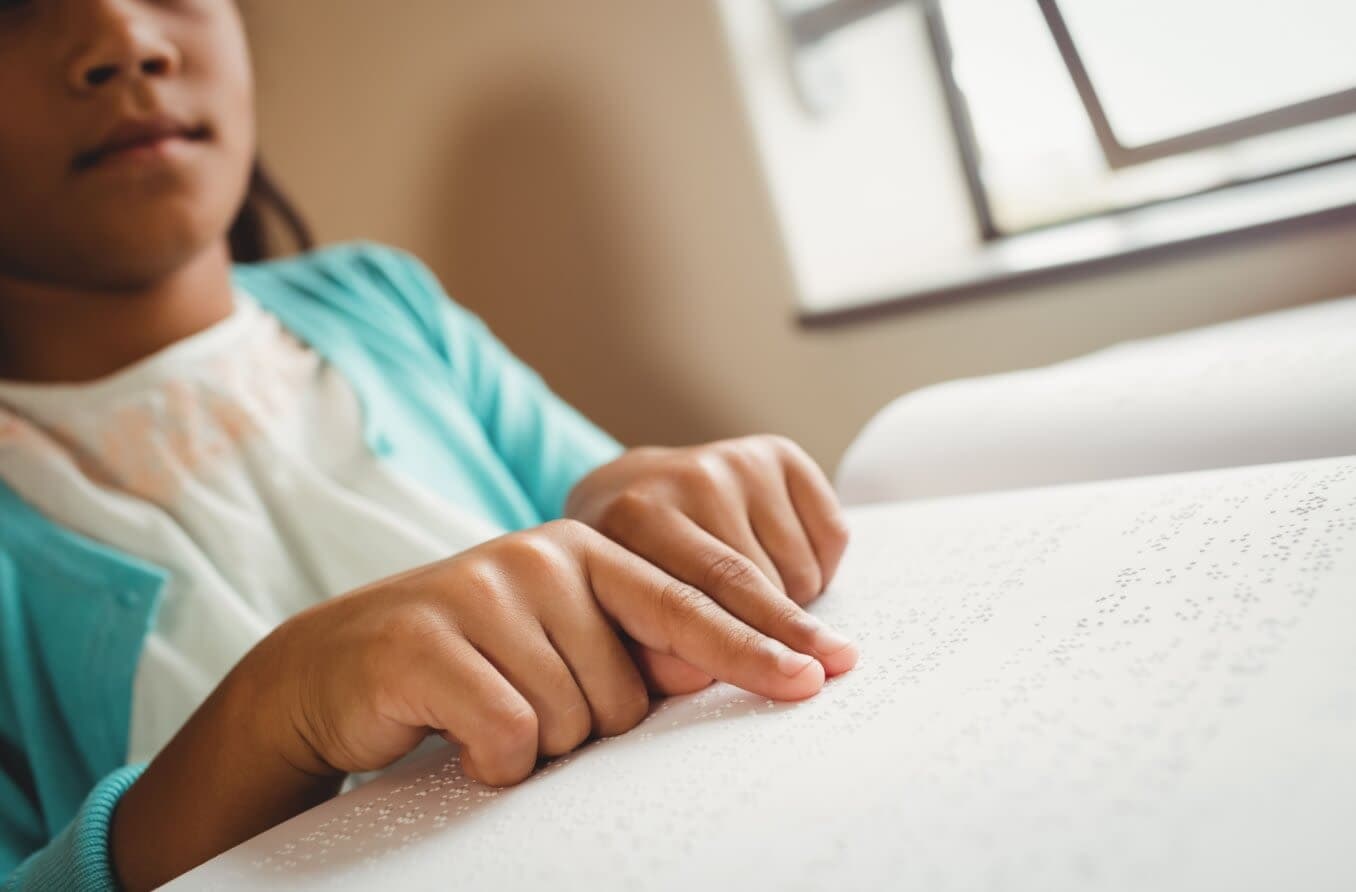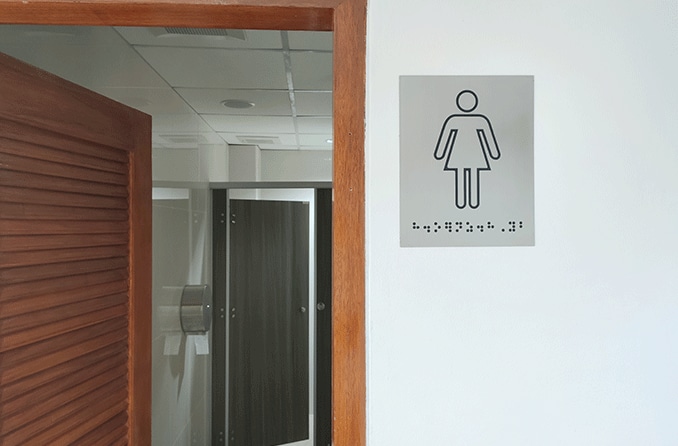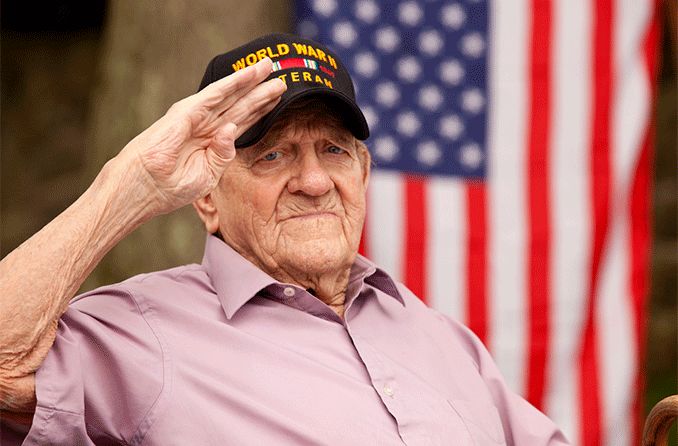What is a white cane?
A white cane is a specially designed tool that helps individuals with vision loss move through their surroundings with greater safety and confidence. It also signals to others that the person using it has a vision impairment.
In addition to being a mobility tool, the white cane is a symbol of independence and equal access. White Cane Awareness Day, also known as White Cane Safety Day, is observed on October 15 to recognize the importance of the white cane as a tool for those who are blind or visually impaired.
Why white canes are so important
A white cane plays a key role in helping visually impaired individuals, including those who are legally blind, travel more safely on their own. It extends their awareness of the environment by helping detect unstable surfaces and potential hazards before reaching them.
By providing tactile feedback and enhancing spatial awareness, the cane allows users to move more efficiently through unfamiliar or busy environments.
A short history of the white cane
The modern white cane started in the early 20th century. James Biggs, a British photographer, lost his sight due to an accident. He painted his walking stick white so it would be more visible in traffic. His idea paved the way for the white cane.
In 1930, George A. Bonham of the Peoria Lions Club in Peoria, Illinois, suggested using a white cane with a red band to help blind people travel more safely. The city passed a rule giving cane users the ability to cross streets with more protection, and the idea soon caught on in other cities.
A major advancement came in 1944, when Richard E. Hoover, a World War II veteran and rehabilitation specialist, developed a new technique for cane use. Known as the Hoover method, his approach involved holding a long cane near the middle of the body and moving it side to side before each step to feel for changes or barriers in the path. This technique became the foundation for modern cane travel and is still widely used today.
In 1964, the United States Congress established White Cane Safety Day, observed each year on October 15, to promote awareness and support for blind and visually impaired individuals. Today, the white cane is more than just a tool. It helps users move through their surroundings safely and navigate daily life with greater ease.
Different types of white canes
White canes come in several forms, each designed to meet specific mobility or identification needs. Choosing the right type of cane can help visually impaired individuals navigate with greater confidence and independence.
Here are a few common types of white canes and how they are used:
- Long cane – Used to scan the environment and detect obstacles, steps and changes in surface
- Identification cane – Mainly used to indicate that the user has low vision
- Support cane – Designed for individuals with vision impairments who also need help with balance or stability
How white canes are used
Learning how to use a white cane effectively involves mastering specific techniques and understanding key safety principles. A certified orientation and mobility specialist (COMS) can provide professional training to teach these methods.
Constant contact
In the constant contact technique, the cane stays touching the ground at all times. This allows the user to receive continuous feedback about variations in the feel, angle or level of the walking surface. Tactile paving is made up of raised, textured patterns on the ground and is often placed near curbs, crosswalks or stairs to help signal these transitions.
Two-point touch
With the two-point touch method, the user swings the cane from side to side in time with their steps. The cane lightly taps the ground on each side ahead of every step, helping to detect objects, curbs or uneven surfaces before stepping forward. In between taps, the cane is raised in a curving motion.
Modern upgrades and tech options
Today’s white canes and mobility tools are advancing. Innovative tools support people with vision loss in moving through their environments. Here are some of the latest technologies helping improve travel for people with vision loss:
GPS navigation applications
GPS apps, like Lazarillo and BlindSquare, help people with vision loss get around by giving spoken directions and location information. They can guide users to nearby places, provide walking directions and announce things, like intersections or bus stops. Some apps also let users choose what kinds of places they want to hear about.
Vibration guidance tools
Tools like HapticNav use phone vibrations to help users stay on the right path. The phone stays quiet unless the person walks the wrong way, which makes it easy to stay on track. These tools work well in loud places or for people who are hard of hearing.
High-tech smart canes
Some white canes now include technology to detect things a regular cane can’t, like objects above the waist. They can connect to a phone to give directions, find nearby places and check bus or train times. Newer models may even allow live support from another person.
Wearable obstacle detectors
Some devices can be worn on the body to help people avoid things in their way. They use sensors or cameras to scan the area and give warnings through sounds or vibrations. Some even use smart technology to describe what’s around or ignore things that aren’t a problem.
How to get a white cane
The Free White Cane Program by the National Federation of the Blind offers fiberglass canes. These canes come in lengths of 53 to 69 inches.
This long, white cane is designed to support independent travel for people who are blind or visually impaired. To receive a cane through this program, individuals must meet the following criteria:
- Be blind or visually impaired
- Live in the United States or Puerto Rico
- Have not received a free cane from the program in the past six months
How to get professional support
Learning to use a white cane effectively often takes more than just receiving the cane itself. Joining forces with a trained expert helps you learn safe, effective travel skills. Consider:
- Connecting with a certified orientation and mobility specialist (COMS) – These professionals are trained to teach safe and effective orientation and mobility skills using a number of techniques. A COMS can show you how to hold, move and navigate with your white cane in a way that fits your needs and lifestyle.
- Looking into state or local support programs – Organizations like the American Council of the Blind (which has state affiliates), VisionAware from the American Foundation for the Blind and other local programs provide tools and resources for those who are visually impaired. This can include education presentations, scholarships, technology classes and more.
If you or someone you know is adjusting to vision loss, support is available. Learning to use a white cane can be a big step. It’s also a powerful one. With the right guidance and tools, you can gain more independence.


